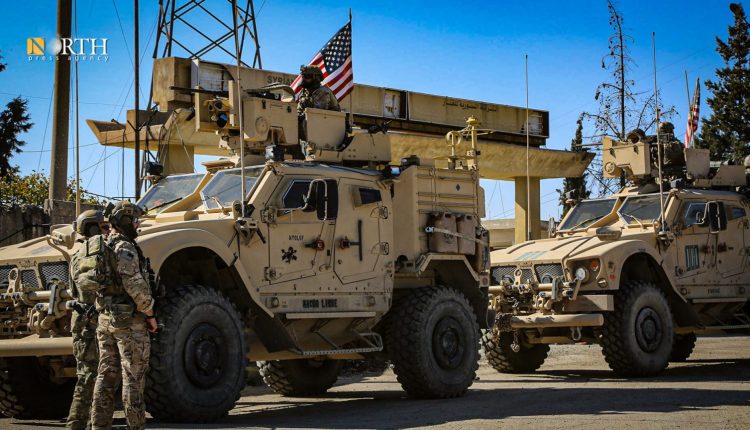Former U.S. Official Says Proposed Troop Reduction in Syria Will Not Undermine Mission
By Kardo Roj
QAMISHLI, Syria (North Press) – A former advisor to the U.S. State Department said on Wednesday that proposed plans to reduce the number of American troops in Syria from 2,000 to 1,000 would not significantly impact the situation on the ground.
Hazem al-Ghabra, a political analyst and former U.S. foreign policy advisor, told North Press that such a reduction has been previously considered and that Washington has contingency plans aligned with evolving regional and international dynamics.
“I don’t see this as a cause for concern,” al-Ghabra stated. “The U.S. presence in Syria is primarily focused on cooperation and training, rather than heavy combat deployment. That mission will continue regardless of whether there are 1,000 troops or another number.”
The statement comes a day after Reuters cited two U.S. officials claiming that Washington is preparing to halve its troop presence in Syria in the coming weeks. However, in a separate comment to Russia’s Novosti agency, a Pentagon spokesperson denied any drawdown, stating that U.S. forces undergo routine redeployment to meet operational needs.
Current estimates suggest approximately 2,000 American troops are stationed in Syria, the majority located in the northeast, where they work closely with the Kurdish-led Syrian Democratic Forces (SDF). These figures remain unofficial and subject to operational security restrictions.
Al-Ghabra emphasized that the U.S. commitment to its local partners—particularly the SDF—remains steadfast, especially in light of ongoing threats posed by remnants of the Islamic State (ISIS). “Coordination, training, and counterterrorism efforts will continue,” he affirmed.
He also noted that the presence of American forces plays a key role in securing detention facilities that house thousands of ISIS detainees, as well as ensuring regional stability through ongoing security assistance.
“The U.S. engagement in Syria is long-term and strategic. It’s not merely about numbers—it’s about maintaining influence and ensuring our local partners can continue their operations effectively,” he added.
The potential reshuffling of U.S. forces comes amid broader questions about America’s future posture in the Middle East, especially as geopolitical shifts prompt Washington to reassess its global military footprint.
In northeast Syria, where the Autonomous Administration of North and East Syria (AANES) governs vast territories with the security backing of the SDF, any reduction in international support raises concerns about a possible power vacuum—particularly amid persistent threats from ISIS sleeper cells and external actors vying for influence.
However, analysts believe that any troop reduction, if executed with strategic coordination, is unlikely to disrupt the fragile security architecture currently upheld by the U.S.-SDF partnership.
While formal confirmation from the Pentagon regarding any reduction remains absent, the continued flow of support and training to SDF units reflects Washington’s broader counterterrorism and stabilization goals in the region.
“The mission has evolved, but the core objective—ensuring ISIS does not resurge—has not changed,” al-Ghabra concluded.
As the situation on the ground evolves, regional stakeholders and local administrations will be closely monitoring U.S. decisions, given their far-reaching implications for the security and governance of northeast Syria.

